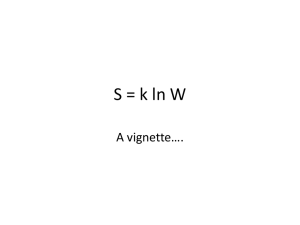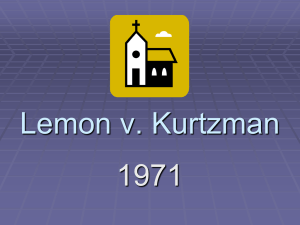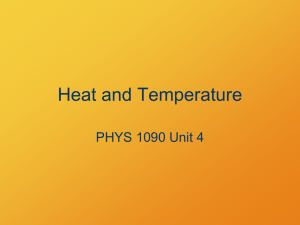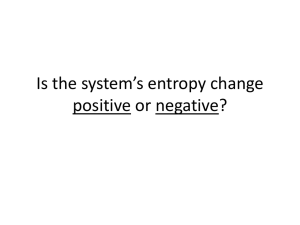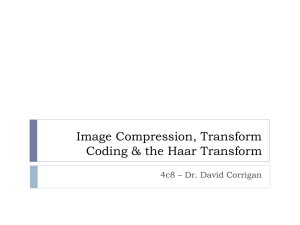What is Quantum Field Theory?
advertisement
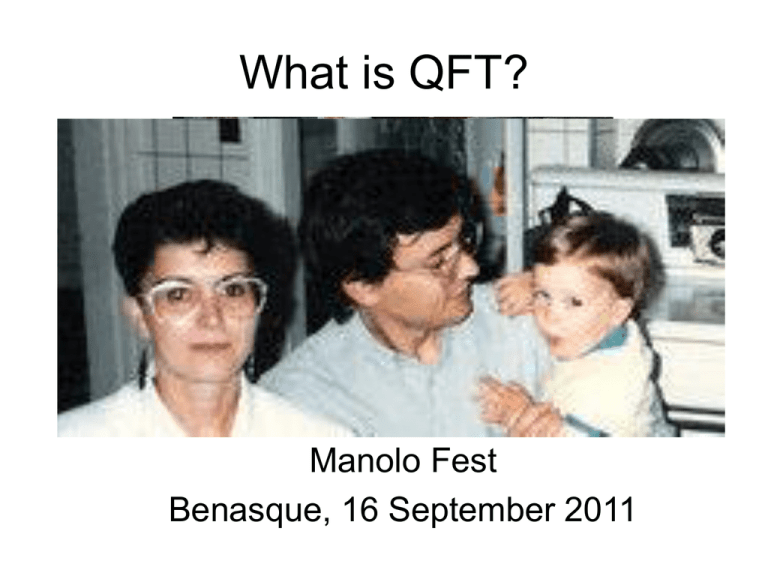
What is QFT?
Manolo Fest
Benasque, 16 September 2011
QFT has a reacher structure: Symmetries
• Space-time symmetry , Poincaré Conservation laws
( x) S()(x)
• CPT , T is not a symmetry, arrow of time
• Global symmetry, e.g. charge conservation
( x) ei (x)
• Scale transformations, Renormalization group
( x) d ( x)
• Local Gauge symmetry, Dynamical principle
L(x) (x)(i eA) (x)
'(x') eie(x) (x)
A' (x') A (x) (x)
QFT offers further possibilities
• Supersymmetry
Gran Unification
• Space-time reparametrization (diffeomorphisms)
Gravity
• Topological invariants
Chern Simons, Knots Theory, Seiberg-Witten, …
• Duality, Holography, …
QFT applies to many domains
• High energies: Standard Model
QED, QCD, Weak interactions
• Low energies: Effective lagrangians
Fermi theory, Chiral lagrangians, Nambu-Jona-Lasinio
• Condensed Matter
QHE, Conformal Field Theory, Hubbard model, …
• Mathematics
Chern- Simons (knot theory), Topological models (Donaldson
theory), index theorems, solitons, instantons, skyrmions, Morse
theory, central extensions, …
There was a time when QFT was one option
1. Physics follows from basic constraints
S-matrix period: Unitarity, Causality, Analiticity
2. QFT was ugly and inconsistent(?)
Infinities (are swept under the carpet (Dirac))
QED is inconsistent at high energies (Landau pole)
Our goal is to compute observables
(probability amplitudes)
r r r
r
out q1 qm | p1 pn in
out
r r
r r
q1 qm |in q1 qm | S
1
Unitarity
out
f | iin
2
i, f
i, f
S I iT
in f | S | i in
2
f |S | ii | S † | f SS † I
i, f
i(T T † ) T †T
tot (ln s)2
A first surprise
Perturbation theory
Z De
i
1
( x ) ( x ) 4 ( x )
x 2
4!
T a1 a2 2
• Non-perturbative physics is lost
• Series is asymptotic: singularity at λ=-ε
• Perturbartive expansion forces to use the theory beyond its domain of validity
d 4q
1
(2 )4 q2 (q ( p1 p2 ))2
diverges
• The local form of the interaction is ultimately responsible for UV divergences
Yet
e.g.
g-2
ae
exp :
th :
ae
0. 001 159 652 180 73
(28)
0. 001 159 652 200 (40)
4-loop = 891 diagrams
error= 10-12
Yet, yet, unitarity constraints, symmetry constraints, RG constraints,
unexpected relations (holography?), ….
There must be a simpler way
Manolo’s guidance:
First high-level lectures: Choosing my first postdoc
Anomalies
A rapid look at renormalization
D
d
k
1
1
I 4D
(2 )D k 2 iÚ(k p)2 iÚ
2 2
s
T
ln
4
ln
2
perm
2
2
32 Ú
R 0 1
30
0
Z(
,Ú)0
2
16 Ú
1 s
T R
ln
const
2
2
16
2
R
Regularized amplitudes
n0 x i , g0 , 0 (x1 ) 0 (xn )
d
0 x, g0 , 0
d
Independence of substraction point
Renormalized field and coupling
Z 0
Renormalized amplitude
nR x, g, lim Z n n0 x, g0 ,
Explicit matches implicit
Beta and gamma function
RG equation
g Zg g0
d n
1 dZn
R x, g, n
R x, g,
d
Z d
dg
(g)
d
1 dZ
(g)
Z d
(g)
n
(x, g, ) 0
g
4
17 3
(g) 3g g (31 12 (3))g 4
3
2
1 2 3 3
(g) g g
12
8
IR divergences, γ5, composite operators, gauge symmetry, evanescent operators,
RG invariants, unitarity, Landau pole, asymptotic freedom, renormalizability,…
Differential Renormalization
(K. Johnson, D. Z. Freedman, JIL)
(x; m)
1 m
K1 (mx)
2
4 x
1 1
I 2 2
4 x
But, the product of distributions is not a distribution
(x;0)
1
1
4 2 x 2
2
4
ipx
d x e
1
x4
The bare amplitude is ok for x≠0. A cut-off regulator excises a region around
this point and extends the distribution.
Extend the distribution by pulling derivatives in front!
4
ipx
d
xe
1
1 ln x 2 2
W 2
x 0
x4
4
x
2 2
ln x 2 2
p2
2
4
ipx ln x
2
W 2 p d xe
ln 2
2
x
x
The integration constant μ becomes the renormalization scale
2
ln x 2 2
T (x)
W
2 perm
2(4 2 )2 4
x2
4
ln x 2 2
2
4
2(4
)
(x)
2
x
2
2
4
4
4 T 128 4 3(8 ) (x) (x) 0
3 2
16 2
QED anomaly: Steinberger, Schwinger, Johnson, Adler, Bell, Jackiw
(x) ei (x)
Vector symmetry
Axial symmetry
kT
J
But
J 0
(x) ei 5 (x) J 5 i 5 J 5 2m 5
J5
J
J i
p T
1
1
1 Ú((lk )2 (l p)2 l 2 )
e Tr 5
e
l
lk
l p l
2
k T
e2
kq
2
6
e2
pq
2
6
violates gauge invariance
pT 0
Add a counterterm!
It follow that QED carries an anomaly
k T
A A
Take
2
J 5 J 5 J J
0
p q
J 5 i
J (3)5 m2 f 0 i
2 m3
7.6eV
64 3 f2
F F
4
F F
8
exp 7.4(1.5)eV
Anomalies in d=2n dimensions appear for n+1 vertex graphs
Regulator free anomaly: pull derivatives in front of amplitudes
1
1
1
T 2Tr( 5 a b c ) a 2 b
c
y
(x y)2 x 2
1 4 4 4 2 4 4 43
t abc
t abc Rabc (x, y) Sabc (x, y)
14 2 43 14 2 43
regular
Sabc
singular
ln 12 x 2 1
ln 22 x 2
x
y
x
y
x
y
( bc ac ) (x y)W 2 bc (a a ) ac (b b ) ab (c c ) (x y)W 2
x
3
x
x
a
y
b
Two singular forms are extended
T (x, y) R (x, y) a (x, y)
1
a (x, y) 16 ln ( x y ) (x) (y)
2
4
Vector and axial Ward identities cannot be fulfilled simultaneously
x T 8 4 (1 2 ln
1
) x y (x) (y)
2
y T 8 4 (1 2 ln
1
) y x (x) (y)
2
z T 8 4 (1 2 ln
1
) x y (x) (y)
2
The system is overdetermined
The anomaly is an renormalizaiton ambiguity at short distances which
Is fixed by long-distance properties (heat kernel analogy)
Manolo’s guidance:
Take home work for my second postdoc
non-perturbative physics
C-theorem
RG flows
UV
Are RG flows irreversible?
IR
Wilson Exact Renormalization Group Equation
q S S
2S
S
S
S
d
t S
dS
1
p
q
p
p
q t
q q
q
2 2 p p p
p p
q
q
Preliminary 1: OPE
A QFT theory is defined by a set of operators
e.g.
I, Aa , Fa, ,Va ,T ,,
QCD :
that close an algebra
k
c
ij (x) Ok (0)
{
x0 n
Oi (x)O j (0) ~
{
cnumber
(x)(0) ~ c{ I I c:2 : (x) : 2 (0):
1
1
4 x2
2
: (x): : (0):~ cI (x)I c (x) :(0):K
Weinberg sum rules, deep inelastic, renormalons, QCD sum rules, Heavy quark eff th, CFT
Preliminary 2: CFT
In 1+1 critical theories, the OPE is constraints by conformal symmetry
Stress tensor does not develop anomalous dimensions: central charge
c
1
Tzz (x)Tzz (0) ~ 4 I 3 z Tzz (0)
2z
z
Scaling dimensions
Tzz (x)i (0) ~
hi
i
2
z
Structure constants
i (x) j (0) ~
cijk
z
hi h j hk
k (0) K
Zamolodchikov’s c-theorem
Hypothesis: d=1+1, unitarity, renormalizability, Poincaré invariance
Thesis:
c(g) / i i c 0
• Poincaré+absence of anomalous dimensions
Tzz (x) Tzz (0)
F(g,t)
z4
t ln zz 2
Tzz (x) Tzz (0)
G(g,t)
z 3z
Tzz (x) Tzz (0)
C(g,t) 2F 4G 6H
• Conservation laws (Ward Identities contact terms are irrelevant at x≠0)
( z Tzz z Tzz )Tzz 0 F& G& 3G 0
( z Tzz z Tzz )Tzz 0 G& G H& 2H 0
&
C 12H
H (g,t)
z2 z 2
• C is observable
i
i C 0
• Unitarity (reflection positivity)
1 4
H Tzz Tzz z z x (x) (0) 0
16
2
2
i c(g) 0
i
Art CFT,
Tzz 0
c(g ) 2F 4G 6H c
*
CUV
d=1+1, unitarity
RG flows are irreversible
Cuv > CIR
CIR
Spectral proof of irreversibility (A. Cappelli, D. Friedan, JIL)
2
2
(
p
p
p
)(
p
p
p
)
1
2
ipx
T (x)T (0) d c(, )
d pe
12
p2 2
The spectral density carries spinless intermediate states
It is positive for unitary theories
Tzz (x)Tzz (0)
d c(, ) c
|x|0
2z
4
UV
4
2z
Ú
|x|
lim d c( , )
Ú0
0
2z 4
cIR
2z 4
c(, ) cIR ( ) csmooth (, )
cUV d c( , ) cIR d csmooth ( , ) c IR
The c-th can be formulated in terms of Quantum Information theory
Unitarity = strong subadditivity of Von Neuman entropy
Manolo’s guidance:
Pay attention to condensed matter models
(clock models, spin chains, DMRG,…)
(also to topology, Chern-Simons, …)
Scaling of entropy
Information
Theory
Classical
Physics
Quantum Physics
Quantification and classification of entanglement
A B
Product state
pi iA iB
Classically correlated states
i
Entangled states
pi iA iB
i
Can we quantify entanglement?
How entangled is the ground state of a QFT?
Pure states: Schmidt decomposition
A
| AB
H H A HB
B
dim H A dim H B
A |u
ij
i 1
j 1
i
A
| vj B
Diagonalize A
Aij Uik kV kl
| AB pi | i A | i B
i 1
χ = min(dim HA, dim HB) is the Schmidt number
1
Entanglement
| AB pi | i A | i B
i 1
Von Neumann entropy of the reduced density matrix
A TrB | AB | pi | i i |
i 1
S A Tr A log2 A pi log2 pi S B
i 1
• χ =1 corresponds to a product state
• Large χ implies large superpositions
• e-bit
1
A B Tr | | I
2
1 1
1
1
S A S B log2 log2 1
2 2
2
2
Scaling of entropy for the XY model
(G. Vidal, E. Rico, A. Kitaev, JIL)
How does entanglement entropy scales in spin chains?
1 x x 1 y y
H XY
l l 1
l l 1 lz
2
2
l1
N
Diagonalization:
• Jordan-Wigner transformation
• Fourier transformation
• Bogoliubov transformation
Jordan-Wigner transformation to spinless fermions
Lieb, Schultz, Mattis (1961)
bi zj i
j i
bi ,b j ij
i, j
n
1 n
H bi1bi bi bi1 bi1bi bi bi1 bibi
2 i1
i1
Fourier transform
1 n1 ijk 2 /n
ck
e
bj
n j0
2 k
i n/2
2 k
H ( cos
)bk bk
sin
(bk bk bkbk )
n
2 kn/21
n
kn/21
n/2
Bogoliubov transformation
k uk ck ivk ck
cos k
H
n/2
k n / 2 1
uk cos
cos
k
2
vk sin
2k
n
2k
2
2 2k
cos
sin
n
n
2
2k
2
2 2k
k k
cos
sin
n
n
2
k
2
Some intuition
The XY chain reduces to a gaussian hamiltonian
• We have the exact form of the vacuum
• We can compute exact correlators
The partial trace of n-L does not imply interaction
• Each k mode becomes a mixed state
| 0 (1) ( 2) ( L)
L
L ~ (1) ~ ( 2) ~ ( L)
(k )
~ ( k )
1 0 0 0
,
0 0 0 1
1 i
2
0
0
1 i
2
1 k
1 k
ck ck
ck ck
2
2
k 1
L
L
1 k 1 k
1 k
1 k
S L
log2
log2
2
2
2
2
k 1
L
Scaling
1
S L log 2 L
3
Saturation away from criticality
Monotonicity along RG flows
Universality of scaling of entanglement entropy
At d=1+1 quantum phase transition point
c
S L L
log 2 L
3
In higher dimensions, Area Law
L
S c1
d 1
n
d 1
d
Entanglement entropy vs Balck-hole entropy!
Entanglement entropy limits simulation of QFT (DMRG, PEPS, MERA, tensor networks)
Scaling of entropy of entanglement summary
Non-critical spin chains
S ~ ct
Critical spin chains
S ~ log2 n
Spin networks in d-dimensions
“Area Law”
S ~ nd-1/d
Shor algorithm
S~r~n
NP-complete problems
S~n
Large entanglement for time evolution, long-range interactions, ….
Black-hole, Tensor Networks, Compression, …
Hilbert space
Local interactions
Area Law
What is QFT?
Lagrangian encapsulates dynamical principles based on symmetries
Perturbative QFT is about RG
Nonperturbative QFT is about RG, nontrivial configurations,
measure of path integral, reshuffling of Hilbert space, integrability
Monte Carlo gives meaning to QFT
Sign problem, understanding the measure
Is QFT a sophisticated corner of Information Theory?
Is QFT about effective theories?
Is QFT a poor man’s vision of some grand scheme?
(holography, duality, string th, missing gravity)
Happy Birthday Manolo!



